A bit more about us
We are passionate about supporting education, networking and collaboration.
Who We Are
The Association is a volunteer-based organization, comprised of members from diverse backgrounds and interests. The diversity of membership provides unique opportunities for the organization’s membership in terms of exploring various aspects of community planning
CPAA History Overview
The Community Planning Association of Canada (CPAC) was formed in the 1950’s by Central Mortgage and Housing Corporation – the federal housing authority. The purpose of the Association was to promote interest in community development across Canada with citizen involvement in the design and planning of their communities. The operation of the Association was funded by grants from Central Mortgage and Housing Corporation to provincial chapters. Membership was in the thousands with up to 3,000 delegates attending national conferences held in various cities across Canada.
In 1979, the Board of Directors decided that the Alberta Chapter should not continue under the misnomer of Community Planning Association of Canada. Phil Elder, who was on the Alberta Chapter’s Board of Directors, a professor of environmental design at the University of Calgary and also a lawyer, drafted a constitution for the incorporation of the Community Planning Association of Alberta (CPAA) under the Alberta Societies Act as a non-profit, non-professional association.
Proud To Be Where We Are Today
CPAA is, today, the only surviving Provincial association from the original Community Planning Association of Canada. It is the only planning association in the nation that seeks to encompass among its membership all stakeholders involved and affected by community planning and to engage them in common discussion and in the promotion of sound community planning.
A Brief Complete History
Our story begins with the founding of the Community Planning Association of Canada (CPAC), incorporated on November 15, 1946. Funded by Central (now Canada) Mortgage and Housing Corporation (CMHC), its purpose was to promote public education and citizen involvement in planning in Canada. Provincial Divisions of CPAC were founded in the 1950s and 1960s.
Membership of CPAC was in the thousands in its early years, with hundreds of delegates attending national conferences held in cooperation with such organizations as the Town Planning Institute of Canada (TPIC) and the American Planning Association (APA). As well, CPAC organized workshops and seminars and produced publications that were distributed widely. Notable among these was The Citizen’s Role in Community Planning published in 1966. The Association and its Provincial Divisions also prepared briefs to governments and participated in policy formation, an example being the Brief to the Metropolitan Area Planning Commission on the Proposed Halifax-Dartmouth Regional Development Plan prepared by CPAC’s Nova Scotia Division in 1973.
Despite a wealth of activity in the 1950s and 1960s, CPAC never developed financial independence, relying primarily on grants and contracts from governments – in particular from CMHC. As a result, it was vulnerable when the OPEC Oil Crisis triggered a major economic recession beginning in 1973. Federal government evaluations of CPAC in 1973-1974 and, ultimately, the Smith Report of 1977 led, first, to the reduction and, then, the withdrawal of federal funding. CPAC activities rapidly faltered and, although some Provincial Divisions continued intermittent activity, by the end of the 1980s CPAC and its Divisions had ceased to operate. The Association and some Divisions continued to exist in name, but eventually they were wound up. The process for formal dissolution of CPAC itself began on December 16, 2004, by which time all Provincial Divisions – except Alberta – were either moribund or deceased.
Sanford Sydness, President of the Alberta Division of CPAC, was determined that it should continue when federal funding was reduced and, shortly later, withdrawn. He conserved funds built up over the ‘good’ years. He updated the membership list, and lobbied Provincial Ministers, Deputy Ministers and influential people for support. He persuaded the Alberta Department of Municipal Affairs to make an annual grant to the Association, and maintained an office in Calgary with an Executive Director and a Secretary. He also convened an annual provincial conference, no matter how small the attendance, and initiated a Newsletter, the Alberta Planning Exchange. He recruited a Board of Directors and held meetings anywhere and anytime that was opportune. But despite his efforts, the financial resources of the Association declined precipitously, leading to the elimination of the position of Executive Director, an office move to less costly quarters, and the changing of the position of Secretary to a part-time one. Sydness personally negotiated and approved all expenditures, conserved revenues, edited the Newsletter, chaired meetings and conferences, and prepared newspaper, radio and television releases, often delivering them himself.
In 1977, the Board of Directors decided that the Alberta Chapter should not continue under the name of the moribund Community Planning Association of Canada. Phil Elder – a Board Member and lawyer – drafted a constitution for the establishment of the Community Planning Association of Alberta (CPAA) as a non-profit, non-professional association under the Alberta Societies Act. The Association was incorporated on October 28, 1977 (although its seal was not granted until November 10, 1981). Its purpose was – and still is – to serve as a forum for discussion of community planning concepts, ideas and issues with a view towards solutions. It is dedicated to the promotion of community planning in the Province. The CPAA has undergone five distinct phases of development in its 31-year history. The first phase, from 1978 to 1983, was a period of Optimism. Despite an extreme shortage of funds and members, there was an air of enthusiasm and confidence about the Association, a belief that it could truly make a difference. The Alberta Planning Exchange newsletter and the annual conference both continued. As well, in 1982, a series of workshops under the guidance of Board Members was held in Fort McMurray, High Prairie, Grande Prairie, Innisfail, Stettler, and other communities throughout the Province. These workshops focussed on regional plans, general municipal plans, land use bylaws, and other statutory plans. Although well received, attendance varied widely – from 12 to more than 100! And, finally, shortly after its formation, the CPAA was approached by the Saskatchewan and Manitoba Divisions of CPAC and several similar organizations in neighbouring U.S. states, to form a loose affiliation for the exchange of ideas and information, a proposal that failed primarily because of lack of funds.
Perhaps inevitably, the spring of enthusiasm increasingly clashed with the realities of scarce resources and, all too quickly, optimism gave way to stress and strain. Struggle characterized the period from 1984 through 1995. This period was dominated by the search for a stable constituency. While CPAA continued to convene an annual conference to address current planning issues from a non-technical perspective, this conference experienced wide fluctuations in both quality and attendance. It was held in various locations around the Province, including Edmonton, Calgary, and Lethbridge, before Red Deer became the regular venue beginning in 1989. The Alberta Planning Exchange newsletter continued to be published. But, more than anything else, these years demonstrated the precarious financial condition of CPAA. But just when the future looked increasingly bleak, a new door opened ushering in a fresh era.
The period from 1996 through 1999 was one of Cooperation. A joint annual conference was held with the Alberta Association of the Canadian Institute of Planners (AACIP) in each of the four years, providing a small measure of stability in both attendance and finances. Once again, there was a small but growing air of confidence. But during the last couple of years the cooperation led to a clearer understanding of the differing roles of CPAA and AACIP and an agreement to discontinue the joint conferences for the millennial year and beyond. Nevertheless, as a result of revenues received through the joint conferences, CPAA emerged from this period in a notably improved financial
condition.
The fourth phase of development may be called Identity. With the return to a separate conference came the development of a stable constituency for the Association, primarily, though not exclusively, elected officials from rural and small urban municipalities. Attendance at the annual Conference and Education Session increased steadily, bringing a stream of revenues that greatly improved the Association’s financial condition. As a result, it was able to establish two student scholarships of $500 each in 2002. On the downside, however, the Association and its Board of Directors developed an over-reliance on the then Board Chair, Tom Baldwin. It fell into a routine of informal governance and operating procedures which, though they may have worked well enough for a small and intimate organization, were increasingly inappropriate for a robust, growing membership-based association.
The sudden and untimely death of Tom Baldwin in the March 2005 became the catalyst for a further phase of development – Stability. A Board of Directors Retreat in September 2005 identified the need for updated bylaws, board job descriptions, standing Committees, an annual budgeting process, and a strategic plan i.e. more formal governance. The past five years have seen steadily rising levels of attendance at an enhanced annual Conference – reaching 275 registrations in 2009. As well, the Association instituted a highly successful Conference Sponsorship Program. The Association has now achieved financial security (defined as having sufficient reserves to operate for a full year in the absence of any revenues). The number of student scholarships has risen to five, each valued at $1000. The first three-year Strategic Plan was completed and adopted by the Board in 2006 with a rolling three-year update. This confirmed the Association’s Vision and Mission and identified goals in four principal areas: educational initiatives; membership development; outreach activities; and governance and management.
CPAA is, today, the only surviving Provincial association from the original Community Planning Association of Canada. It is the only planning association in the nation that seeks to encompass among its membership all stakeholders involved and affected by community planning and to engage them in common discussion and in the promotion of sound community planning.

